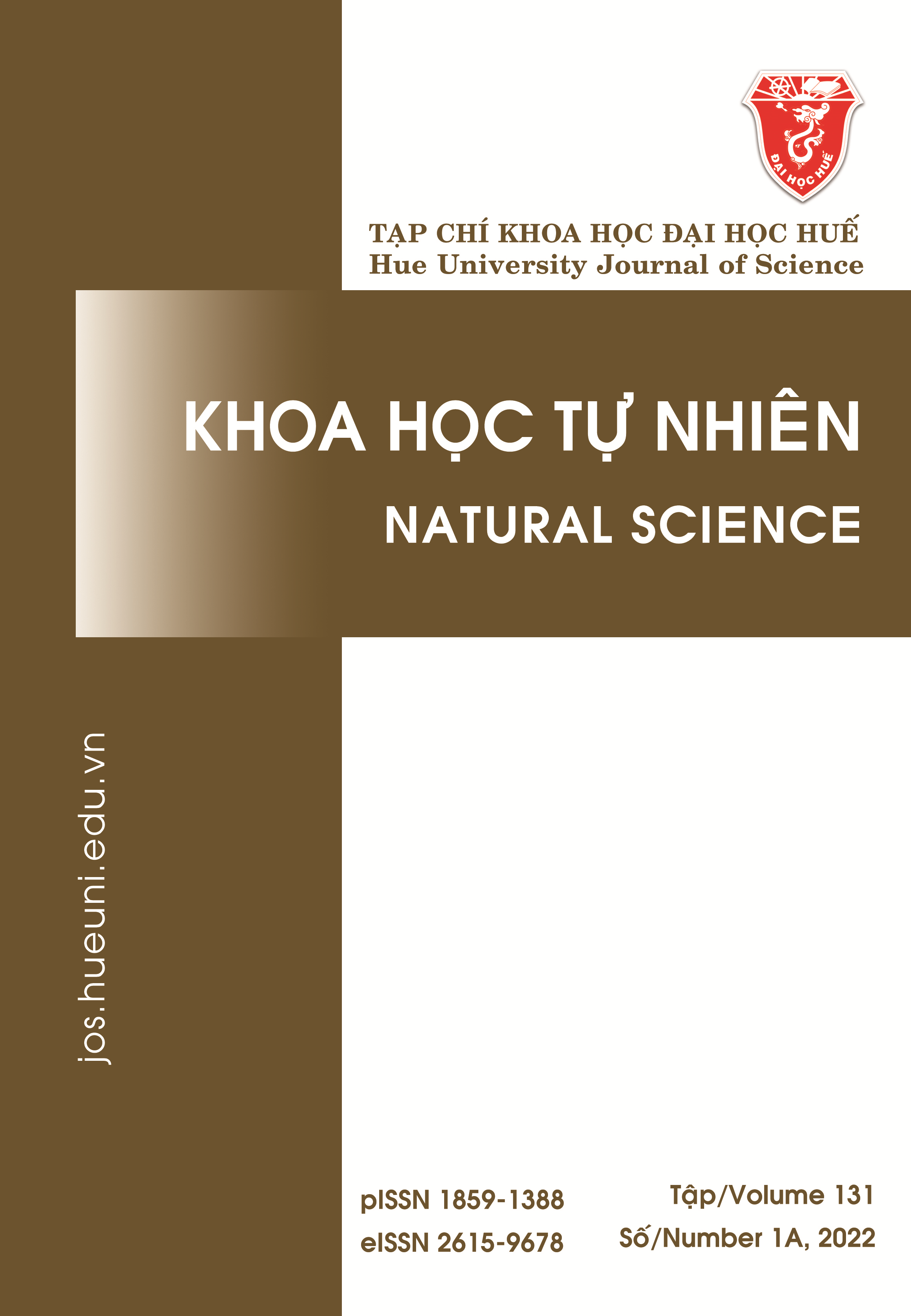Abstract
In this study, we use the aqueous extract of Robusta plant leaves as a reducing agent and alginate as a surfactant to synthesize silver nanoparticles from silver nitrate (AgNO3). The influence of extraction time and the solid-liquid ratio, the concentration of AgNO3, the volume ratio between silver nitrate solution and the extract of Robusta leaves, and the reaction time on the synthesis were investigated. The optimal conditions are as follows: 15 g of leaves/200 mL, silver nitrate concentration 4 mM, Vextract/VAgNO3 4:100, 1% sodium alginate solution, and reaction time 45 minutes. The obtained solution of silver nanoparticles has a yellow-brown color. The TEM, XRD, and FT-IR measurements of the samples show that the silver nanoparticles have been successfully synthesized. The particles are spherical with an even size and 19.0-26.6 nm in diameter.
References
- Alexander JW. History of the medical use of silver. Surgical infections. 2009;10:289-292.
- Eckhardt S, Brunetto PS, Gagnon J, Priebe M, Giese B, Fromm KM. Nanobio silver: its interactions with peptides and bacteria, and its uses in medicine. Chemical reviews. 2013;113:4708-4754.
- Chernousova S, Epple M. Silver as antibacterial agent: ion, nanoparticle, and metal. Angewandte Chemie International Edition. 2013;52:1636-1653.
- Dong XY, Gao ZW, Yang KF, Zhang WQ, Xu LW. Nanosilver as a new generation of silver catalysts in organic transformations for efficient synthesis of fine chemicals. Catalysis Science & Technology. 2015;5:2554-2574.
- Matsuhisa N, Kaltenbrunner M, Yokota T, Jinno H, Kuribara K, Sekitani T, Someya T. Printable elastic conductors with a high conductivity for electronic textile applications. Nature communications. 2015;6:1-11.
- Chen D, Qiao X, Qiu X, Chen J. Synthesis and electrical properties of uniform silver nanoparticles for electronic applications. Journal of materials science. 2009;44:1076-1081.
- Neu HC. The crisis in antibiotic resistance. Science. 1992;257:1064-1073.
- Mapara N, Sharma M, Shriram V, Bharadwaj R, Mohite KC, Kumar V. Antimicrobial potentials of Helicteres isora silver nanoparticles against extensively drug-resistant (XDR) clinical isolates of Pseudomonas aeruginosa. Applied Microbiology and Biotechnology. 2015;99(24):10655-67.
- Chen X, Schluesener HJ. Nanosilver: a nanoproduct in medical application. Toxicology letters. 2008;176:1-12.
- DOI: 10.1016/j.toxlet.2007.10.004
- Khodashenas B, Ghorbani HR. Synthesis of silver nanoparticles with different shapes. Arabian Journal of Chemistry. 2019;12(8):1823-38.
- Loo YY, Chieng BW, Nishibuchi M, Radu S. Synthesis of silver nanoparticles by using tea leaf extract from Camellia sinensis. International journal of nanomedicine. 2012;7:4263.
- Chung D, Kim H, Ko J, Lee J, Hwang B, Chang S, et al. Microwave Synthesis of Silver Nanoparticles Using Different Pentose Carbohydrates as Reducing Agents. Journal of Chemistry and Chemical Engineering. 2018;12
- Rafique M, Sadaf I, Rafique MS, Tahir MB. A review on green synthesis of silver nanoparticles and their applications. Artificial Cells, Nanomedicine, and Biotechnology. 2017;45(7):1272-91
- El Sheekh MM, El Kassas HY. Algal production of nano-silver and gold: Their antimicrobial and cytotoxic activities: A review. Journal of Genetic Engineering and Biotechnology. 2016;14:299-310.
- Tran HV, Dai Tran L, Ba CT, Vu HD, Nguyen TN, Pham DG, Nguyen PX. Synthesis, characterization, antibacterial and antiproliferative activities of monodisperse chitosan-based silver nanoparticles. Colloids and Surfaces A: Physicochemical and Engineering Aspects. 2010;360:32-40.
- Tâm NTT. Tổng hợp và nghiên cứu tính chất quang của màng nano Ag/TiO2 ứng dụng trong quang xúc tác và diệt khuẩn [master's thesis]. Hà Nội: Trường Đại học Công nghệ; 2012.
- Kasthuri J, Veerapandian S, Rajendiran N. Biological synthesis of silver and gold nanoparticles using apiin as reducing agent. Colloids and Surfaces B: Biointerfaces. 2009;68(1):55-60
- Ghosh M, Mondal M, Mandal S, Roy A, Chakrabarty S, Chakrabarti G, et al. Enhanced photocatalytic and antibacterial activities of mechanosynthesized TiO2–Ag nanocomposite in wastewater treatment. Journal of Molecular Structure. 2020;1211:128076
- Shao Y, Wu C, Wu T, Yuan C, Chen S, Ding T, et al. Green synthesis of sodium alginate-silver nanoparticles and their antibacterial activity. International Journal of Biological Macromolecules. 2018;111:1281-92
- Dong Y, Zhu H, Shen Y, Zhang W, Zhang L. Antibacterial activity of silver nanoparticles of different particle size against Vibrio Natriegens. PLOS ONE. 2019;14(9):e0222322.

This work is licensed under a Creative Commons Attribution-ShareAlike 4.0 International License.
Copyright (c) 2021 Array




